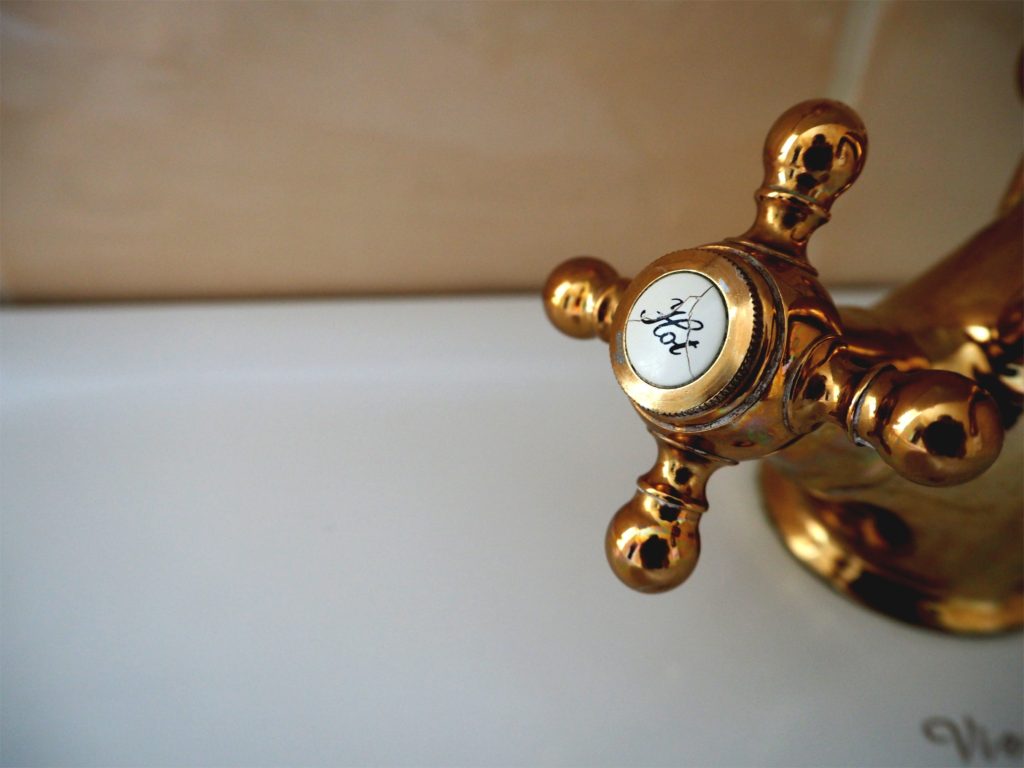Unfortunately hard water is prevalent throughout Hertfordshire. Below is a list of the 10 most affected places from a survey conducted by Best Water Technology (BWT) in 2017. Luton appears in the top 5, with Watford, Stevenage, Hemel Hempstead and St Albans all in the top 10!
 Why do we have hard water?
Why do we have hard water?
The South and East of England has the hardest water in the UK, with Hertfordshire rated as having ‘hard to very hard water’. That is because our county contains more limestone and chalk in the ground than most other regions, which is why hard water is so common.
What causes the hard water?
Hard water is caused by the groundwater passing through soil and rocks which contain limestone, chalk or gypsum. These hold a high amount of minerals in the water, mainly calcium and magnesium, which dissolve into the water.
The great news is that hard water is not a health hazard if you’re drinking it on a regular basis! In fact, hard water contributes to your daily intake of magnesium and calcium so can be beneficial.
Does hard water build up and limescale affect you?
However, most households in Hertfordshire will be experiencing the effects of hard water on their household appliances with unsightly tarnishing. Plus, longer term it can affect the plumbing and efficiency of larger appliances, meaning they might have to be replaced more frequently.
We’re going to take a look at the main appliances and ways of keeping on top of hard water build and limescale. It’s important to note that regular upkeep and maintenance is the best way of controlling limescale – so try not to leave it too long each time you want to treat your appliance! We know that’s easier said than done, so if you would prefer us to help you instead feel free to give us a call.
Top tip (for all of the below): it’s better to use white vinegar for any of the above limescale removal tips, as it has a higher acidity content
Limescale in kettles
This is one of the most obvious places that limescale will make itself felt. Every time you go and make a nice cup of tea, there it is again! Those white flaky bits of limescale floating around your cup is unsurprisingly rather unappetising. So what’s the best way of treating it?
Luckily some simple ingredients can fix the problem reasonably easily. Using a 50/50 mix of lemon juice or vinegar and letting it sit in the kettle for a while before rinsing thoroughly, and giving it a bit of a scrub if stubborn, will normally work.
Limescale in toilets
Limescale in toilets turns an even more unpleasant colour (usually brown or orange). Either way, you will definitely notice if you have a problem in your toilet bowl!
Firstly, when trying to combat limescale in toilets there are a couple of popular options that you might want to give a miss. Myth has it that cola and bleach do the trick. However, cola worsens the stain and bleach just lightens the stain rather than removing it.
So make sure you try our tried and tested method of vinegar. This time you tip a whole bottle (around a litre) of white vinegar around the side and bottom of the toilet bowl. Ideally you would let this sit overnight, or a minimum of 3 hours. You do need to apply a bit of elbow grease and scrub the toilet with more vinegar and a brush to get rid of all of it. And voila, you’ve got a sparkling clean toilet again! If this doesn’t shift it, you may need to use a more abrasive material, such as ultra-fine sandpaper, 0000 steel wool or a pumice stone, and roll up your sleeves to remove it. Make sure you test an area first so it doesn’t cause any damage to the bowl.
Hard water tarnishes on wine glasses and glassware
Fear not, leave your glassware, jugs, decanters etc overnight in a sink or large container filled with vinegar and water. And if your pots and pans are suffering too, you can simmer with the same solution for 15 minutes and then give them a thorough clean.
Limescale on dishwashers and washing machines
To prevent the build up limescale longer term in your washing machine or dishwasher, you can use an undiluted solution of lemon juice (around 250ml) in the machines. Then run on an empty cycle. Otherwise there are other limescale detergents you can buy in the shops. If however you’re more environmentally conscious, you can buy ‘magnetic’ balls which prevent limescale from clogging up your pipework and inside of machines, such as the Ecozone Magnoball.
Limescale on taps, showers and tiles
The best way to keep limescale at bay is REGULAR maintenance and keeping taps, tiles, showers etc as dry as possible.
Very stubborn limescale on shower screens!
If you have a shower screen that marks very easily, it’s best to wipe the screen dry after every use using a squeegee or microfibre cloth. Once a week (or more often if required!), spray the screen with a water vinegar (⅓ vinegar) solution and let it sit for 10-20 minutes before cleaning.
Limescale on shower heads
Submerge your shower head in undiluted white vinegar for several hours. So if you can remove your shower head, then leave it in a container of the solution. Otherwise you can use a plastic bag with an elastic band around it to keep the shower head secure. You may need to do a bit of scrubbing if it’s severe! Keep old toothbrushes as they are brilliant for getting into nooks and crannies.
Limescale on taps
Again, vinegar is your friend here. A good trick is to soak kitchen towels in neat vinegar and leave on your taps for a while before cleaning and wiping dry.
Alternatively you can use a paste of bicarbonate of soda and lemon juice, and give the taps a good scrub with your old toothbrush.
Tiles and grout
Discoloured grout and stained tiles are a pet hate of ours.
For discolouration, use a paste to address the issue. Mix lemon juice and borax to remove rusty stains. For brown, black and green/blue stains, you can use cream of tartar and hydrogen peroxide.
For limescale build up, mix equal parts bicarbonate of soda and vinegar and apply to the affected areas. Let it sit for a good 10 minutes before using a slightly abrasive tool to remove it. It will take several attempts to remove the worst of it though, so try not to give up too soon.
Herts Carpet Cleaning started in St Albans in 2010. We have become one of the most trusted professional cleaning companies for busy families, tenants and landlords in Hertfordshire and North London, specialising in one off cleans. We offer affordable and high quality cleaning services, including carpet cleaning, oven cleaning, upholstery cleaning, end of tenancy cleaning, after build cleaning and many other services.

